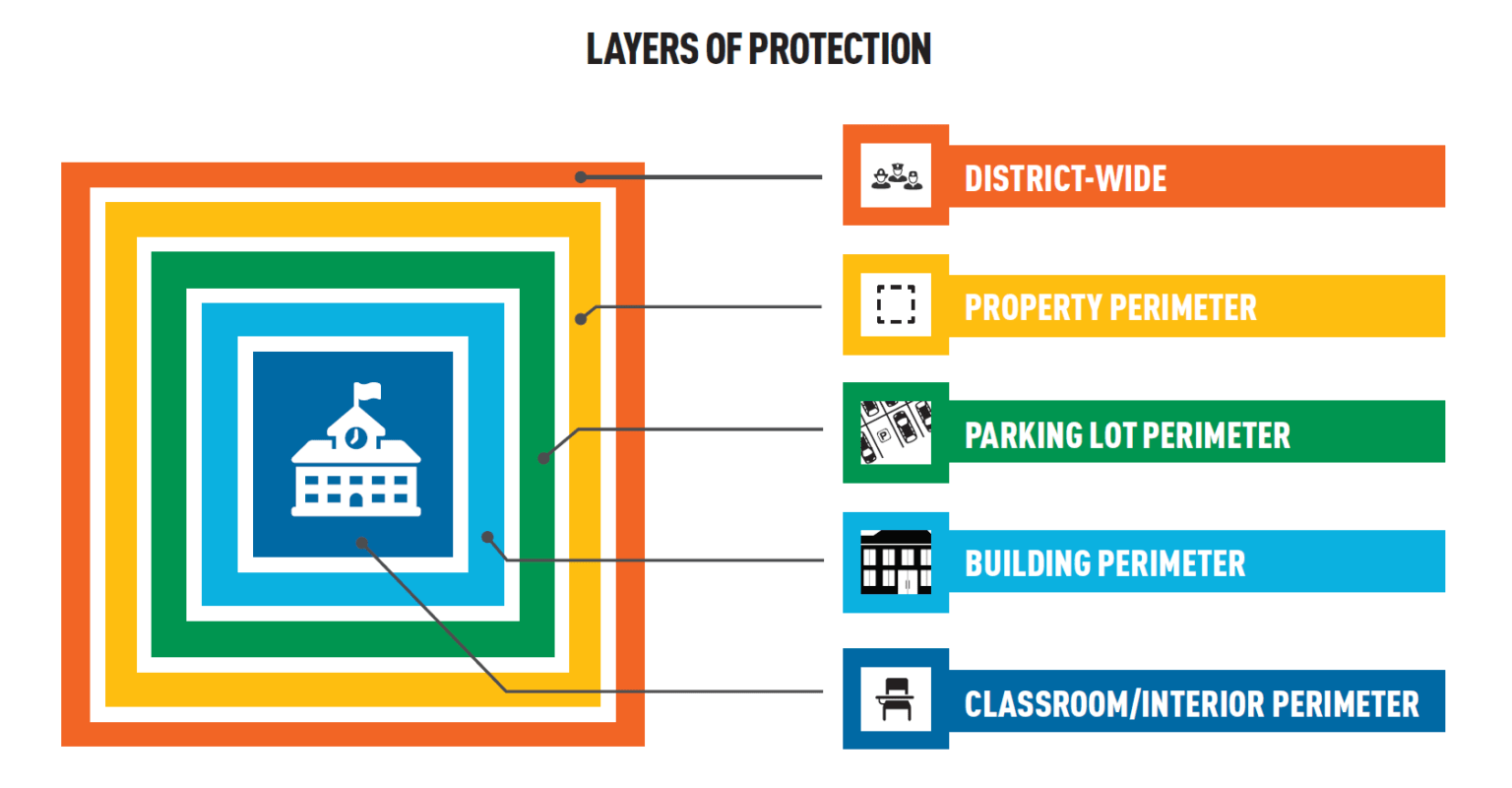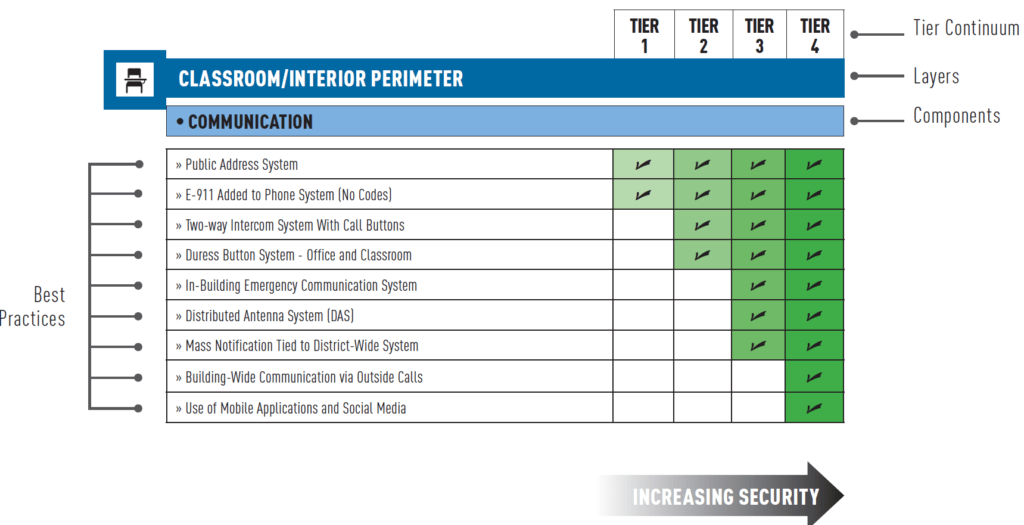The safety of children in educational environments is a core concern and topic of conversation. In 2018 and 2019 alone, over 100 school shootings have taken place in a K-12 setting. Safeguarding educational institutions can be a daunting task. Where do you begin and how do you ensure you have the right technology to keep your school safe?
Assess Risk in Layers with PASS Guidelines
Referring to PASS K-12 Safety & Security Guidelines, which were recently recognized by the Federal School Safety Commissions, it’s recommended to take a preventative, holistic, and layered approach. PASS Guidelines provide the most comprehensive information available on best practices in securing school facilities, no matter the size or budget.
“This guideline provides a framework that has been looked at by some of the best security, life-safety, communications experts in the world. Schools can use this as a checklist to identify holes in the technology roadmap,” shares Chuck Wilson, executive director for NSCA (a leading trade association representing the commercial electronic systems industry).
According to the guidelines, there are five physical layers of protection for school facilities. By reviewing these “Layers of Protection”, it allows the opportunity to address a broad range of potential threats a school may face.

Within these layers, are basic protective elements referred to as components. These safety and security components include:
- Policies and Procedures
- People (Roles and Training)
- Architectural
- Communication
- Access Control
- Video Surveillance
- Detection and Alarms
By assessing each physical layer and the components within each layer, this information provides a common starting part for prioritization of school security needs. Additionally, the guide provides “tier” baselines for approaching various levels of security.

Risk & Security Assessments – Develop a Plan
Before deploying any security solution, conducting risk assessments serve as a key prerequisite to identify risks or potential security-related threats.
Additionally, gauging the health and performance of your school’s current technology infrastructure are important considerations to help plan for the future. These assessments can help mitigate risk by identifying gaps, taking a preventative approach, while maximizing budget dollars.
Effect of Security Technology on Schools
Michele Gay, co-founder and executive director of Safe and Sound Schools, shares her experience on how technology can play a vital part in school safety. Gay, lost her youngest daughter at the mass shootings at Sandy Hook Elementary in 2012.
“It’s critical that schools are looking into the impact technology can have. A school’s mission will always include safety, but then the questions start to trickle in: Where do we start? What’s valuable? What’s at the top of the list? This is why the PASS Guidelines are so valuable. This trusted resource serves as a starting point and provides the framework to determine what the [security and technology] needs are to help put a solid plan in place.”
Gay concludes, “It’s a great feeling to know schools can have a guide that will help them make the right decisions up front.”
Technology for Physical Security Solutions
Integrating technology solutions such as video surveillance, door access, visitor management and paging and communication systems in your school can help keep your campus safe. Referring to the PASS Guidelines – both a recommendation by Gay and Wilson – can help provide a baseline to determine next steps in getting your school to the level of security it needs.
PASS guidelines identify and classify best practices for securing K-12 facilities to help ensure the right solutions. To download the PASS Safety and Security Guidelines for K-12 Schools, please visit the PASS Website. For more information on next steps, please contact New Era Technology at solutions@neweratech.com.

 Canada
Canada Australia
Australia New Zealand
New Zealand UAE
UAE United Kingdom
United Kingdom




